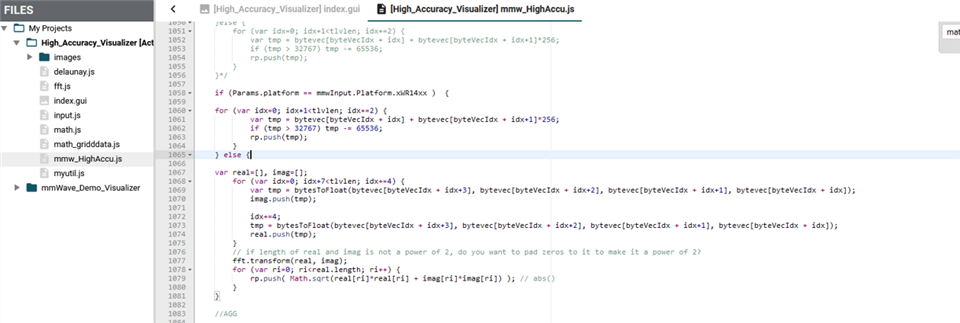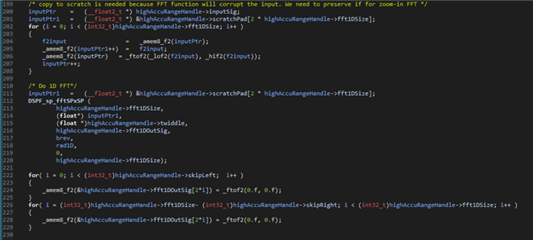Hi,
When we look at how the High Accuracy Visualizer works, we can see that the « range profile » data sent by UART corresponds to time domain data (Image 1). A fourier transform is therefore performed by the visualizer to obtain the frequency domain range profile. However, for a project, I need to receive this frequency domain range profile directly via UART.

Since the fourier transform is also performed in the chip (CCS --> high_accuracy_68xx_dss -->RADARDEMO_highAccuRangeProc_priv.c --> line 210) (Image 2) , I would like to know if you know the reason why time data is sent and if it is possible to send frequency data instead ?

Thanks


